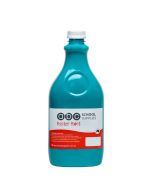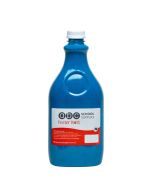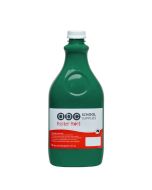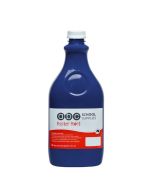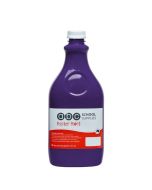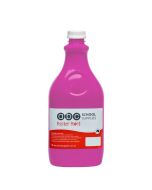Exploring the Benefits of Finger Painting for Toddlers: Unlocking Creativity and Expression
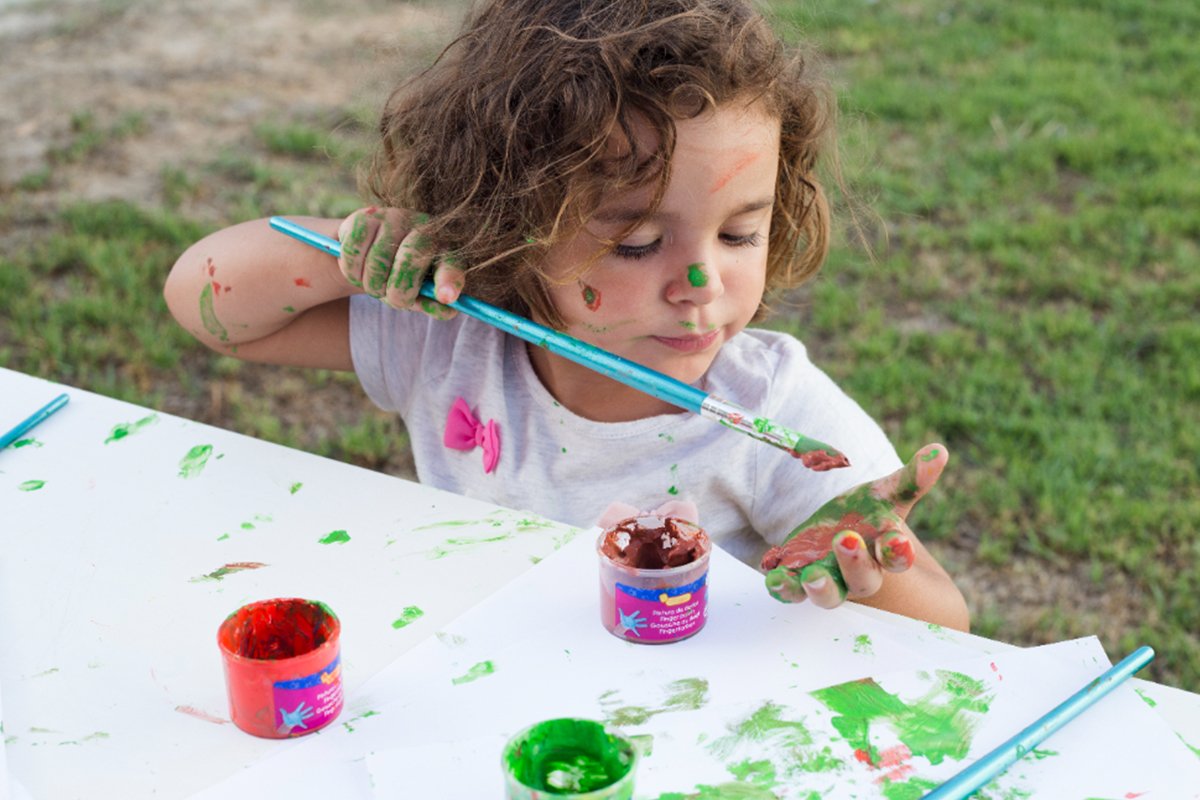
Finger painting is more than just messy fun; it’s a powerful tool for early childhood educators to build confidence and self-expression in young learners. This sensory-rich activity provides children with opportunities to explore creativity, take ownership of their work, and develop essential skills—all while fostering a positive sense of self. This article explores how finger painting can be used to boost confidence in early learners and offers practical tips for integrating it into daily activities.
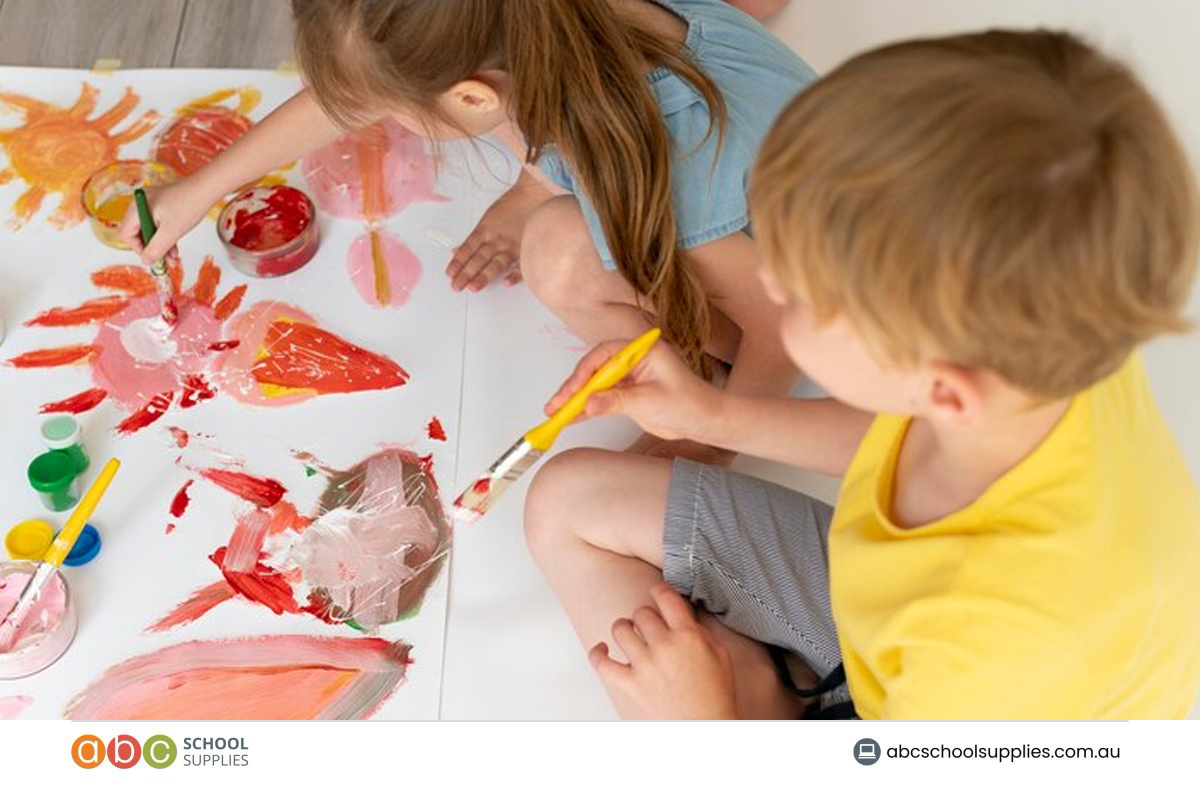

Why Finger Painting Boosts Confidence and Self-esteem in Toddlers
Freedom to Explore and Express
Finger painting allows children to express themselves freely without the constraints of structured tools like brushes or pencils. The tactile experience of using their hands to create art gives them a sense of control over their creations. This freedom to explore encourages children to experiment with colours and shapes, helping them feel capable and proud of their work.
Risk-Taking in a Safe Space
Unlike traditional art forms, finger painting has no “right” or “wrong” way to do it. Children can take creative risks without fear of failure, which helps them build resilience and confidence in their abilities. Trying new techniques, such as blending colours or creating patterns with their fingers, reinforces their belief in their capacity to learn and grow.
Personal Achievement and Ownership
When children see their finger-painted artwork displayed in the classroom or at home, they experience a sense of accomplishment. This recognition of their efforts reinforces their confidence and motivates them to take on new challenges. The simplicity of finger painting makes it accessible to all children, ensuring that everyone can succeed and feel included.
Connecting Finger Painting Activities to EYLF Outcomes
Finger painting directly supports key learning outcomes outlined in the Early Years Learning Framework (EYLF). Outcome 1 emphasizes the importance of children developing a strong sense of identity, which is fostered when children take ownership of their creative work and feel proud of their accomplishments. Outcome 3 focuses on children’s wellbeing, which is enhanced through the sensory and emotional expression finger painting offers. Additionally, Outcome 4 highlights the development of dispositions for learning, such as curiosity, confidence, and creativity. Through finger painting, children engage in exploratory play, develop persistence as they experiment with new techniques, and feel empowered to express their unique ideas, reinforcing these vital learning dispositions.
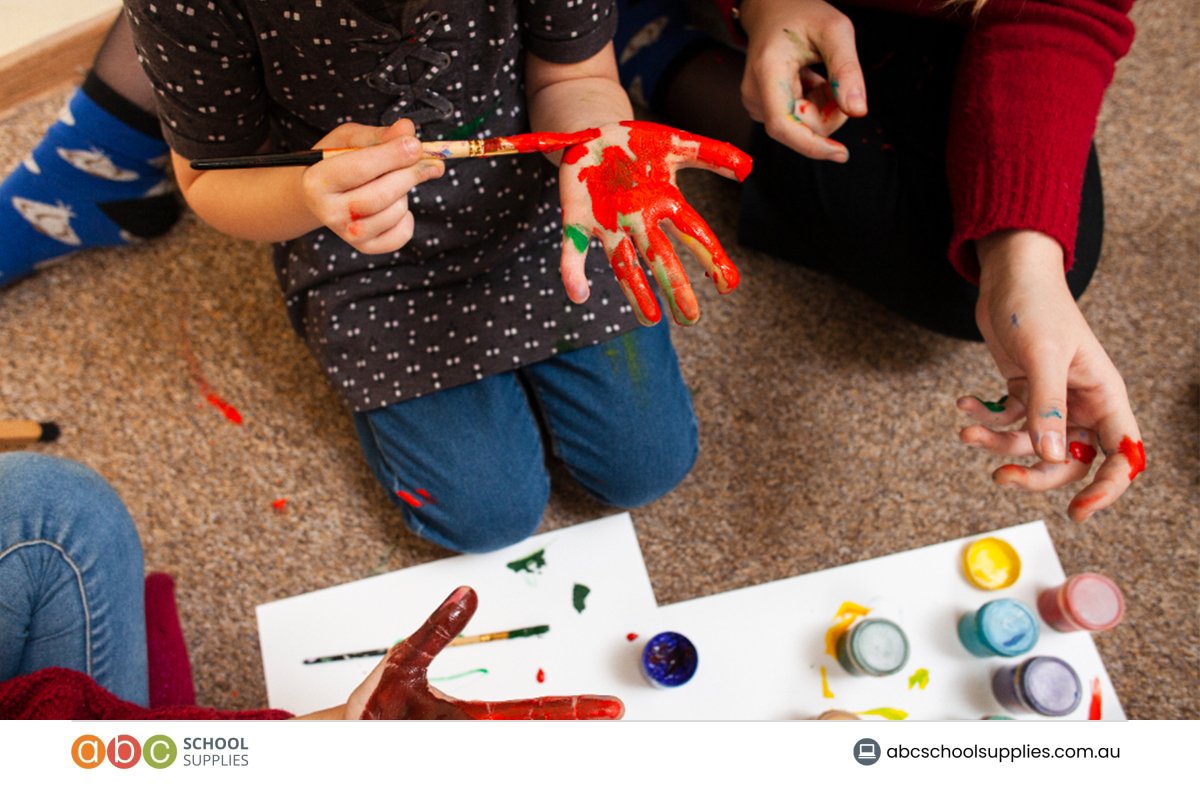

How Finger Painting Supports Holistic Development
Building Fine Motor Skills and Dexterity
Manipulating paint with their fingers strengthens the small muscles in children’s hands and improves hand-eye coordination. These physical achievements can give children confidence in their ability to master other tasks, such as writing or drawing, later in life.
Problem-Solving Skills
Finger painting naturally encourages young children to develop problem-solving skills as they experiment with colours, textures, and techniques. When blending paints, creating patterns, or figuring out how to achieve their desired outcome, children engage in critical thinking and decision-making. For example, they might explore what happens when two colours mix or how to use their fingers to create specific shapes. This process stimulates cognitive development and fosters a trial-and-error approach, helping children build resilience and adaptability—key components of effective problem-solving.
Encouraging Emotional Expression
Finger painting provides children with an outlet to express emotions they might not yet have words for. The tactile experience of moving paint across paper can be soothing and empowering, helping children build self-awareness and emotional regulation.
Fostering Creativity and Individuality
Every child’s finger painting is unique, reflecting their personal choices and imagination. This individuality fosters a sense of identity and pride, as children learn to value their creativity and see it as an important part of who they are.
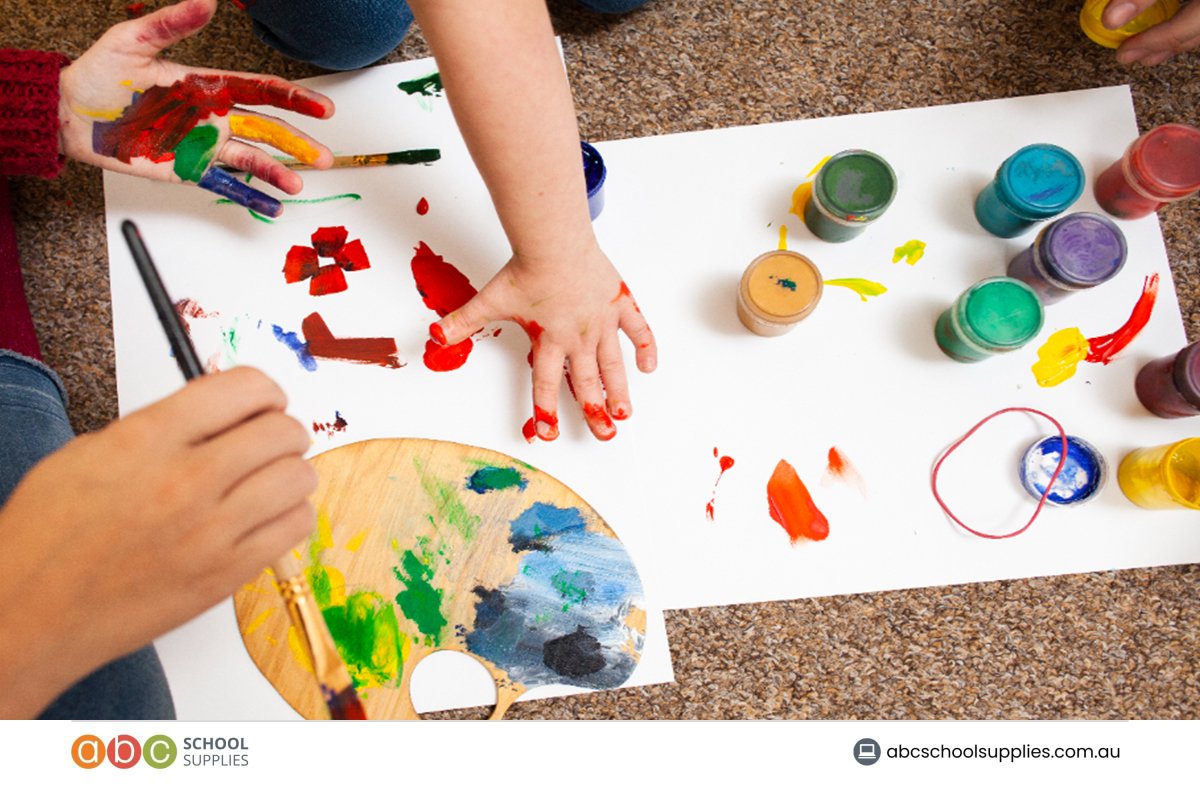

The Power of Finger Painting and Art Therap
The power of finger painting extends beyond the classroom and into the realm of art therapy. As a therapeutic tool, finger painting encourages self-expression and emotional release, particularly for children who may struggle to articulate their feelings verbally. The tactile nature of finger painting can have a calming effect, reducing anxiety and promoting mindfulness in young learners. This activity also helps build connections between children and educators, as shared creative experiences foster trust and open communication. By incorporating finger painting as both an educational and therapeutic practice, educators can support children’s emotional well-being while building their confidence in a safe and nurturing environment.
Practical Tips for Boosting Confidence and Self-expression with Finger Painting
1. Create a Judgment-Free Zone
Ensure that finger painting sessions are relaxed and free from criticism. Celebrate every child’s work by focusing on their efforts and creativity rather than the final product.
2. Provide a Variety of Materials
Offer a range of colours, textures, and surfaces to inspire exploration. Consider using textured paper, natural materials like leaves, or even bubble wrap to add depth and excitement to their art.
3. Incorporate Themes
Link finger painting to themes children are learning about, such as seasons, animals, or feelings. For example, ask children to paint how they feel using different colours. This approach ties creative expression to real-world experiences, making the activity more meaningful.
4. Display Their Creations
Hang children’s artwork on classroom walls or create a “gallery” for families to view. This public acknowledgment builds confidence by showing children that their work is valued and appreciated.
5. Use Finger Painting in Group Activities
Encourage teamwork by having children collaborate on a large mural or shared art piece. Group projects help children learn to communicate and support each other, fostering a sense of belonging.
6. Pair Art with Storytelling
Combine finger painting with storytelling to make it even more engaging. For example, after reading a story about the ocean, ask children to create underwater scenes with their fingers. This connection helps children feel confident in interpreting ideas through art.
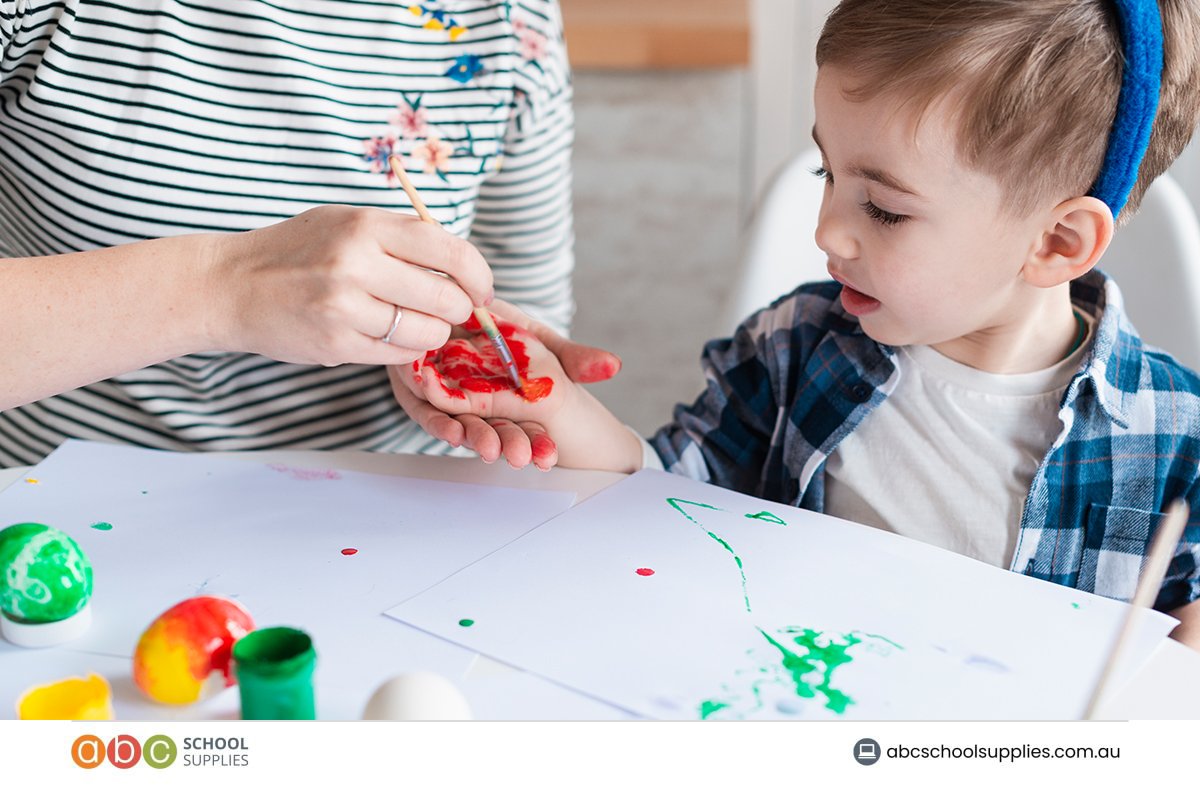

The Role of Educators in Building Confidence Through Finger Painting
Educators play a vital role in facilitating finger painting sessions that stimulate confidence and cognitive growth. By offering encouragement and positive feedback, they help children perceive themselves as capable learners. Comments such as, “I love how you mixed those colours!” or “You worked so hard on this painting!” stimulate a child’s self-esteem and curiosity, fostering a willingness to explore and experiment further.
Additionally, educators can use finger painting to observe and support individual developmental needs. For instance, a child who faces challenges with fine motor skills can enhance their confidence through the sensory stimulation of finger painting, while another child may use it as a cognitive and emotional outlet for self-expression.
The Benefits of Using Poster Paint for Finger Painting
Poster paint is a water-based, non-toxic paint that is ideal for finger painting with young children. Known for its vibrant colours and easy-to-use consistency, poster paint provides an excellent medium for creative exploration. It dries quickly, making it suitable for layering colours and experimenting with different techniques. Because it is washable, poster paint allows children to fully immerse themselves in the sensory experience of finger painting without concerns about permanent stains. Its smooth texture makes it easy for little hands to spread, blend, and create patterns, stimulating both cognitive and fine motor skills. Additionally, poster paint is widely available and affordable, making it a practical choice for classrooms and home use.
Inspiring Confidence, One Finger Painting at a Time
Finger painting is more than just a creative activity—it’s a confidence-building experience that supports children’s emotional, social, and physical development. By embracing the mess and celebrating the unique creations that emerge, educators and parents can help young children develop a strong sense of self-worth and the courage to tackle new challenges.
For high-quality finger painting supplies and other tools for creative activities, explore the range at ABC School Supplies to inspire your next classroom activity.



